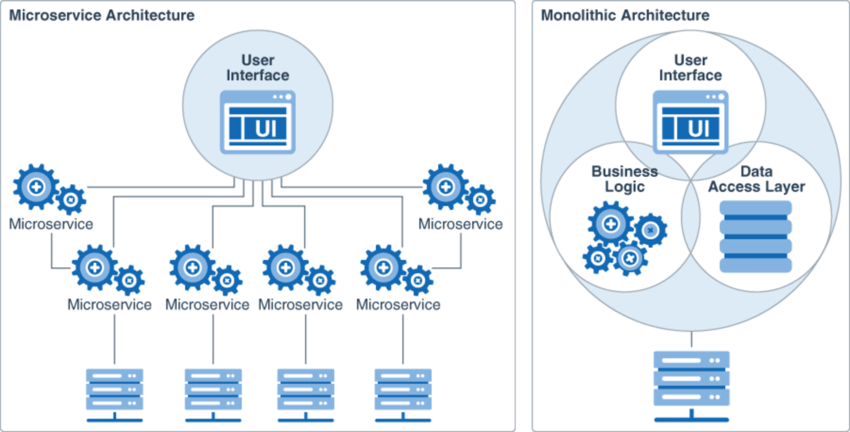Microservices architecture is a popular concept in the field of software development. Before diving into the details of microservices, it is important to understand what monolithic architecture is and why microservices were developed to overcome its disadvantages.
Monolithic Architecture
Monolithic architecture is a traditional approach where an entire application is developed as a single unit. For example, if we are building an Airbnb-like application, all the different functions such as payments, authentication, and listings are combined within a single codebase. This approach follows the principle that an application should be developed as a single unit and deployed as a single unit.
Microservices Architecture
Microservices architecture, on the other hand, breaks down the entire application into individual units called microservices. Each microservice has its own codebase, repository, and can be deployed independently. In the case of the Airbnb application, we can have separate microservices for payments, authentication, and listings. This allows for more flexibility in development and management, as each microservice can be developed and deployed separately.
ALSO READ : Top 10 AI Websites to Supercharge Your Productivity in 2024
Advantages of Microservices Architecture
- Independent Scaling: With microservices architecture, we can scale individual microservices independently based on their specific requirements. For example, if the listings microservice has high traffic, we can scale it up without affecting other microservices.
- Flexible Technology Stack: Each microservice can use its own technology stack. In the case of the Airbnb application, we can use Java for the payments microservice, while using Python for the authentication microservice. This allows for flexibility in choosing the best technology for each specific task.
- Decentralized Development: Each microservice can be developed by a separate team, allowing for parallel development and faster time to market. This is particularly beneficial for large organizations or startups with multiple teams working on different components of the application.
- Improved Fault Isolation: In monolithic architecture, a bug or issue in one component can impact the entire application. In microservices architecture, each microservice is isolated, so a bug in one microservice does not affect the others. This makes debugging and maintenance easier.
Communication in Microservices Architecture
Microservices communicate with each other using different methods:
Synchronous Communication using API Calls
The most common method of communication is through synchronous API calls. For example, if the payment service needs to interact with the listing service, it can send a standard HTTP request to the endpoint of the listing service, and the listing service can respond with a synchronous HTTP response.
Asynchronous Communication using Message Brokers
Another method is asynchronous communication using message brokers. In this approach, the payment service can send a message to the message broker, which will then forward the message to the desired microservice. The message broker is responsible for delivering the message to the correct destination microservice. This decouples the microservices and allows for more flexibility in communication.
Service Mesh-like Communication
A third type of communication is using a service mesh-like architecture. In this approach, each microservice has its own independent API and endpoint. When the payment service needs to interact with the listing service, it sends a standard HTTP request to the desired endpoint. The infrastructure takes care of delivering the message to the correct microservice.
ALSO READ : What is a Server V-13 ? Servers vs Desktops Explained
Disadvantages of Microservices Architecture
While microservices architecture offers many benefits, it also comes with its own set of challenges:
Increased Management Overhead
With multiple microservices, there is increased management overhead. Each microservice has its own codebase and repository, which can be time-consuming to manage. This is more pronounced in larger organizations or startups with multiple microservices.
Infrastructure Cost
Microservices architecture requires a more complex infrastructure setup. Each microservice needs to be deployed and managed independently, which can lead to higher infrastructure costs. This can be a deterrent for small teams or startups with limited resources.
Dependency Management
Microservices architecture introduces a lot of dependencies between microservices. Each microservice relies on the correct version of other microservices. For example, if the authentication microservice is using version 1.2 of a package, the listings microservice also needs to use the same version. This can make dependency management more challenging.
Learning Curve
Adopting microservices architecture requires a learning curve for developers who are used to working with monolithic architecture. It requires a shift in mindset and understanding of how to develop and manage independent microservices.
Conclusion
Microservices architecture is a popular choice for large organizations due to its flexibility and scalability. It allows for independent development and scaling of individual microservices. However, it also comes with increased management overhead and infrastructure costs. The choice between monolithic and microservices architecture depends on the specific requirements of the application and the organization. Microservices architecture is not a one-size-fits-all solution, but it offers many benefits for organizations that can overcome its challenges.
ALSO APPLY : Internshala Internship 2024 : Remote work, Rs.5,000/Month
Follow On Twitter: Krishna Sahu
For More Update Join My WhatsApp Channel Click Here










Be First to Comment